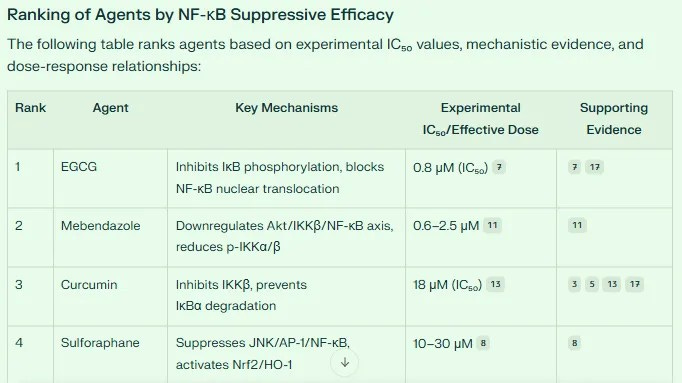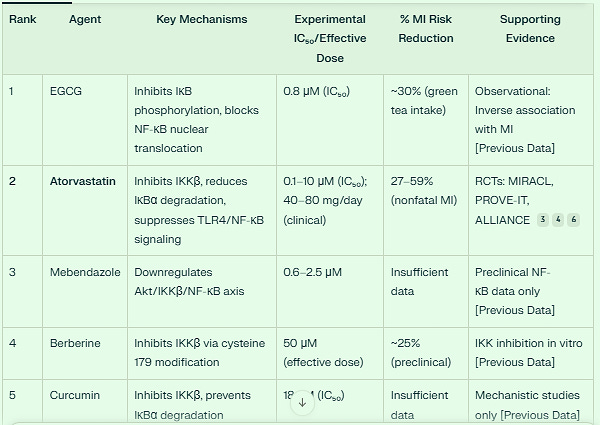Following an acquaintance’s recent heart attack coupled with a crucial Dr. Marik discovery, I felt an urgent need to share the following with my readers.
What is important to note is that shedding has been well described in PubMed, and the fact remains that one can develop spike protein disease whether or not one has received the vaccine, and whether or not one has been infected with the SARS virus.
Dr. Marik’s Bombshell Spike Protein Discovery
In addition, I will disclose a shocking discovery made by Dr. Paul E. Marik, my research partner and friend, concerning this key protein, one which is made even more intriguing based upon its origins in a Chinese Biolaboratory.
Allow me first to review what AI revealed concerning heart attack risk and Spike Protein in the order I found it.
Nuclear factor kappa B protein, otherwise known as Nf-KB should be well known to all my readers. Nf-KB is a main cancer stem cell pathway, but it is much more. It is also an inflammatory disease biochemical pathway and can dramatically increase the risk for heart attack, also known as myocardial infarction.
AI helped quantitate the heart attack risk with the use of various agents. So, I shall begin where I started to share with you the impact of each revelation. Today we focus on Spike Protein and myocardial infarction, while saving cancer risk, and Dr. Marik’s discovery for last.
Quantifying Risk of Myocardial Infarction with Various Nutraceuticals
First, let us understand that activation of Nf-KB increases the risk for heart attack. It makes sense that prominent inhibitors of Nf-KB such as EGCG and Curcumin should thus lower the risk, and this is indeed the case.
Nf-KB Inhibitors:
Here is AI’s initial ranking of the potency of the various nutraceutical and repurposed drugs that are Nf-KB inhibitors:
High-Potency Inhibitors (IC₅₀ < 10 μM)
EGCG: The most potent inhibitor, with an IC₅₀ of 0.8 μM, disrupts IκB phosphorylation and NF-κB DNA binding7. Its efficacy diminishes in terminally differentiated cells due to reduced laminin receptor expression7.
Mebendazole: Targets Girdin/Akt/IKKβ signaling, showing sub-micromolar efficacy in ovarian cancer models11.
Moderate-Potency Inhibitors (IC₅₀ 10–50 μM)
Curcumin: Broad-spectrum IKKβ inhibitor, but poor bioavailability limits clinical translation13. Analogues like EF24 (IC₅₀ = 35 μM) offer improved potency4.
Resveratrol: Synergizes with curcumin to suppress TNFα-driven inflammation in adipocytes5.
Lower-Potency Agents (IC₅₀ > 50 μM)
Quercetin: Efficacy varies by cell type, with p53-independent apoptosis in lung cancer6.
Vitamin C: Requires millimolar concentrations, limiting practical use despite mechanistic novelty9.
Clinical and Practical Considerations
Bioavailability Challenges: Curcumin and EGCG face rapid metabolism, necessitating nanoparticle formulations or combinatorial approaches317.
Repurposed Drugs: Doxycycline and mebendazole offer low-cost, well-tolerated options but require dose optimization1011.
Natural Combinations: Matcha tea (rich in EGCG) and turmeric (curcumin) may provide synergistic effects in dietary interventions17.
Estimating Percent MI Risk Reduction with Nf-KB Suppressors:
Natural Compounds with Observational Support
EGCG/Matcha Tea (~30%): Cohort studies link >3 weekly servings to lower MI incidence, though RCTs are needed to isolate EGCG effects 1014.
Anthocyanins (34%): Blueberry/strawberry intake correlates with MI risk reduction in young women, potentially via endothelial NF-κB regulation 14.
Limitations and Research Gaps
Bioavailability Challenges: Curcumin and EGCG show strong NF-κB inhibition in vitro but lack clinical MI data due to poor absorption.
Repurposed Drugs: Mebendazole and doxycycline require cardiovascular endpoint trials despite promising preclinical NF-κB data.
Nutrient Timing: Anthocyanin and quercetin benefits may depend on lifelong dietary intake rather than short-term supplementation 1114.
Mechanistic and Clinical Insights on Berberine
NF-κB Suppression
Berberine directly inhibits IKKβ by modifying cysteine 179, preventing IκBα phosphorylation and degradation, thereby blocking NF-κB nuclear translocation 141.
In LPS-stimulated intestinal cells, berberine reduced p-IκBα and p-p65 levels dose-dependently (75–250 μg/ml) 1.
Its IC₅₀ for IKK inhibition is approximately 50 μM in vitro, making it less potent than EGCG or mebendazole but comparable to curcumin 145.
Mechanistic Insights on Atorvastatin
NF-κB Suppression:
Atorvastatin inhibits IKKβ activity, reducing IκBα phosphorylation and degradation (IC₅₀: 0.1–10 μM) 1612.
Blocks TLR4-mediated NF-κB activation via MyD88-dependent pathways, attenuating inflammatory responses in endothelial cells 613.
Reduces HMGB1-induced vascular inflammation by suppressing TLR4/NF-κB signaling 610.
Cardiovascular Risk Increase with Adding HFCS & Aspartame:
Mechanistic Insights on Aspartame
NF-κB Activation:
Aspartame metabolism generates phenylalanine, aspartic acid, and methanol, which trigger ROS-mediated NF-κB activation via TLR4/MyD88 pathways 169.
Chronic exposure (12 weeks in mice) increases pro-inflammatory cytokines (IL-6, TNF-α) and reduces antioxidant defenses (SOD, CAT), exacerbating vascular inflammation 79.
Cardiovascular Risks:
Human Data: 17% increased cerebrovascular event risk (HR 1.17, 95% CI 1.03–1.33) at doses equivalent to 3–4 diet sodas/day 3.
Preclinical Data:
Revised Rankings and Synergies
Pro-Inflammatory Agents: Aspartame and HFCS rank lowest due to NF-κB activation and significant CVD risk elevation.
Contrast with Suppressors: Atorvastatin and EGCG remain top agents, demonstrating dual NF-κB suppression and MI risk reduction.
Adding Hydrogenated Oil & Revised Rankings for CVD Risk:
Hydrogenated Oils and High Fructose Corn Syrup both substantially increase risks for MI and stroke. Aspartame is not nearly as bad, however in this day and age of COVID and vaccines, I would not advise that anyone consume it. Consider Stevia or Monk Fruit sweetened drinks. They will not increase risks of either heart disease or cancer. [Major caveat: Do not consume stevia-sweetened drinks that contain erythritol as it increases risks for stroke.]
And soon we will learn about Dr. Marik’s bombshell.
But one last revision. Let us add Cigarette Smoking to gain a sense of perspective about the relative risks in this table.
Adding Cigarette Smoking & Revised Rankings for CVD Risk:
Mechanistic Insights on Cigarette Smoking
NF-κB Activation:
Cigarette smoke extract (CSE) induces IKKβ phosphorylation and IκBα degradation, enabling NF-κB nuclear translocation in airway epithelial cells17.
ROS generation from smoke components (e.g., polycyclic aromatic hydrocarbons) activates TLR4/MyD88 signaling, amplifying pro-inflammatory cytokines (TNF-α, IL-6, IL-1β)21113.
Chronic smoking reduces antioxidant defenses (e.g., glutathione), exacerbating NF-κB-driven inflammation713.
Clinical and Public Health Implications
NF-κB as a Therapeutic Target: Smoking-induced NF-κB activation drives chronic inflammation in COPD and lung cancer215.
[Inhibitors like EGCG or statins may mitigate downstream effects.]
MI Risk Stratification: Smokers require aggressive secondary prevention (e.g., P2Y12 inhibitors, lipid-lowering therapies) due to elevated recurrent MI risk812.
EGCG can almost completely neutralize the increased lung cancer risk of cigarette smoking. It is not completely unreasonable to think it may powerfully reduce the cardiovascular risks as well.
Adding Spike Protein & Revised Rankings for CVD Risk:
Here we arrive at Dr. Marik’s discovery. And this takes us back to Galectin 3. Recall that Galectin 3 is a powerful activator of angiogenesis, invasion, and proliferation in cancer. Galectin 3 is also a biomarker of disease.
The higher the Galectin 3 level in general, the greater the risk of heart disease, cancer, and metastatic spread. Galectin-3 blockers such as Pectasol can suppress metastases in Prostate Cancer and reduce doubling times.
What Dr. Marik found hit me as completely unexpected and shocking and connects Galectin-3 with Spike Protein in a way no one could have expected.
And it skyrockets the risk of heart attack with Spike Protein as you will see in the table below that estimates the risk of myocardial infarction with Spike Protein.
Keep reading with a 7-day free trial
Subscribe to Repurposed Drugs: Powers & Possibilities to keep reading this post and get 7 days of free access to the full post archives.











